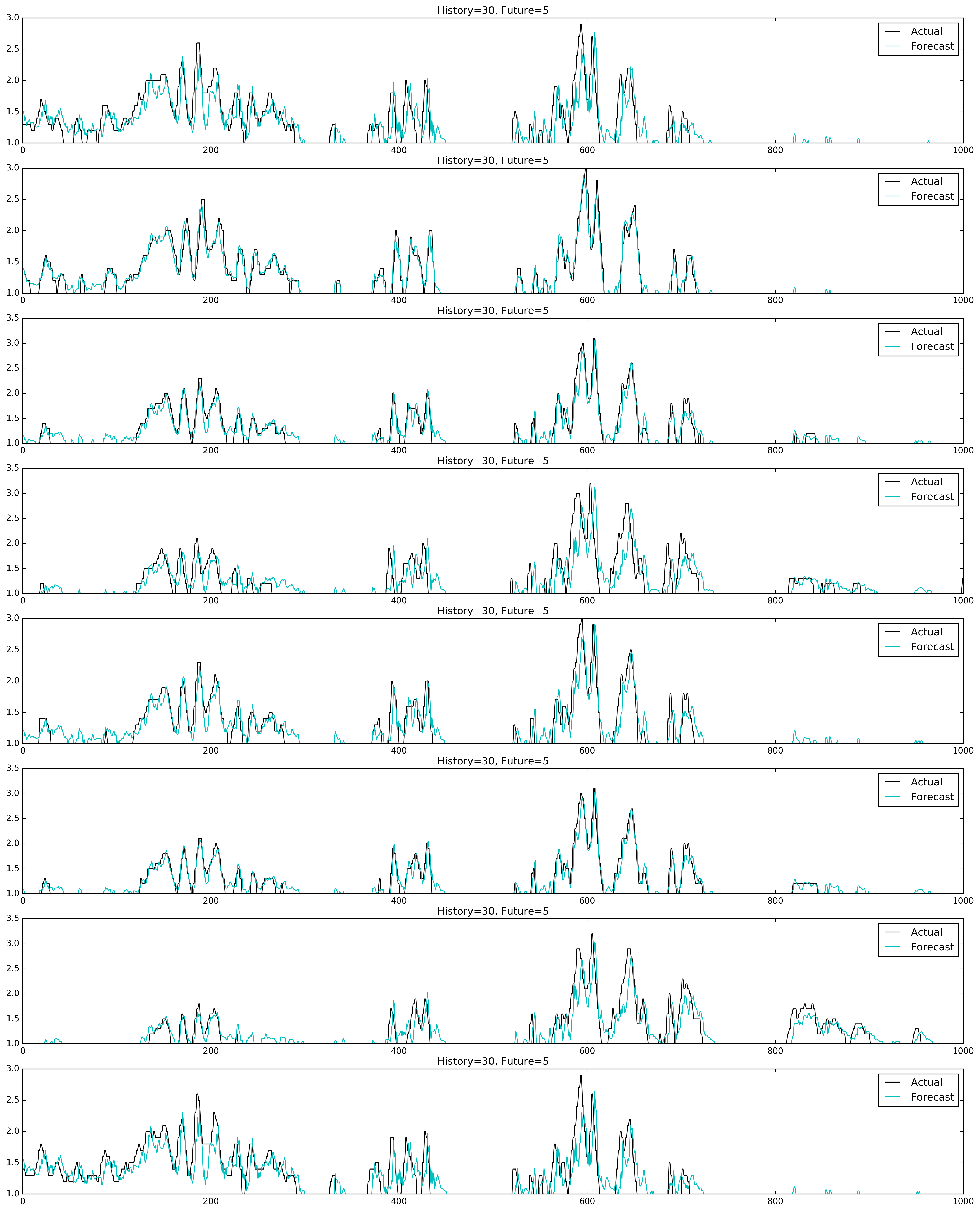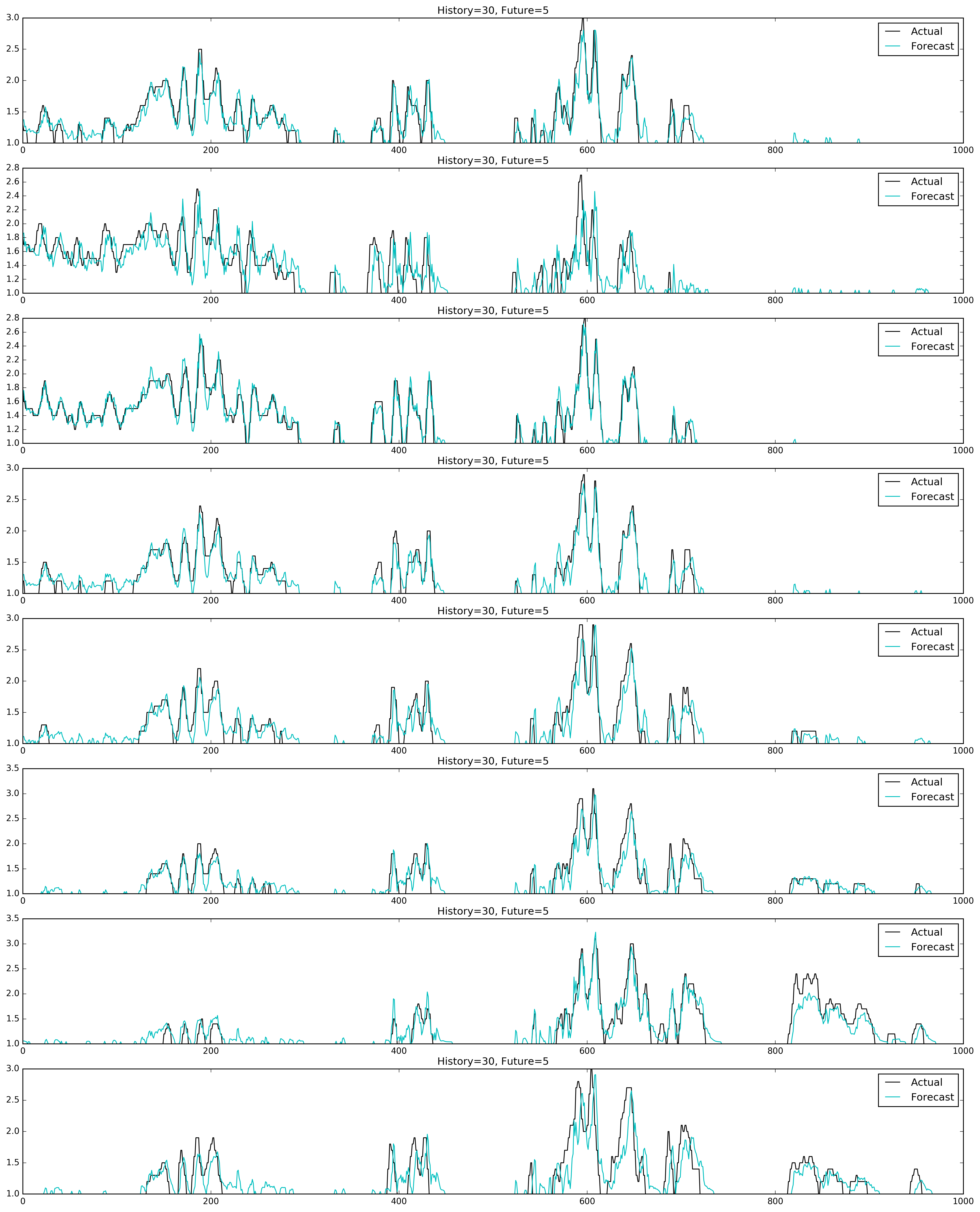Inspiration
I have been exploring different ways to work with timer series data. There are the classical ways, moving average, auto regressive, ARIMA, ARCH/GARCH etc for univariate and VAR, bayesian, etc for multivariate. These all kind of suck. For one time series is an afterthought in Python at this point and 2nd it turns out time series models aren't really used to forecast for the most part; they are mostly used to look back at events and try and see what caused them. Well I want to forecast. Enter the Recurrent Neural Net.
Long Short Term Memory
If you're reading this I'm sure you've seen models that can write original jokes, pickup lines, city names, poems, and even entire scripts of things like Shakespeare and even the Star Wars movies. How is this possible? Long Short Term Memory (LSTM) cells. The way a Recurrent NN is designed allows it to learn from past words, letters, or as is my case lags of time. All of these scenarios are sequential, they all rely on the things that came before it, and that's all time series is really. The LSTM layer, or layers have three different gates inside of the cells, one to decide whether to let new info in, one to decide to erase the state or not, and one to decide what info to output.
My Model
As of 18/10/2016
The results are good, almost annoyingly good actually. Since I am still learning how to best set up and tweak this type of model I should be able to squeak out even better results. As of right now I have around a .035 mean square error score. This is for a forecast of 5 minutes in the future for 16 different points. The model has an input layer with 16 nodes, one hidden LSTM layer with 256 nodes and dropout, and one output layer with 16 nodes.
It looks like this:
# Build my neural net
net = tf.input_data(shape=[None, STEPS_OF_HISTORY, FEATURES])
net = tf.lstm(net, 256, return_seq=False)
net = tf.dropout(net, 0.5)
net = tf.fully_connected(net, FEATURES, activation='linear')
net = tf.regression(net, optimizer='sgd', loss='mean_square', learning_rate=0.3)As of 28/10/2016
I've been able to improve the model. I grid searched many hyperparameters and network architectures. I tried more LSTM hidden layers, one worked best. I tried many different number of nodes in the LSTM layers, all the way from 32 to 512 and 128 ended up being the best. Using dropout ended up being counter productive as well. I tried three different activation functions: 'tanh' which is the default, 'softmax', and 'softsign'. Softsign worked best and also had the extra benefit of training quicker than the other two activation functions. The model improved with every epoch up to 150 and then it started to over fit the training data. All of this gave me a mean square error score of 0.02911.
It now looks like this:
# Build my neural net
net = tf.input_data(shape=[None, STEPS_OF_HISTORY, FEATURES])
net = tf.lstm(net, n_units=128, activation='softsign', return_seq=False)
net = tf.fully_connected(net, FEATURES, activation='linear')
net = tf.regression(net, optimizer='sgd', loss='mean_square', learning_rate=0.3)Look at these graphs!
As you can see it gives the best results I've gotten for this data set of mine. It performs better than my ExtraTreesRegression and that was only forecasting 3 minutes ahead, at 5 minutes it was a little to inaccurate for my tastes. It can be seen here https://github.com/matthewswogger/Surge_Forecast_ExtraTrees it's very usable but the extra 2 minutes this model gives us while also being more accurate is hard to beat.
Are RNN LSTM the Future?
I'm sold. This seems like a really good way to do multivariate time series analysis. Especially considering when I started diving into multivariate time series, friends who wrote master thesis on multivariate time series just flat out said "dude...don't...just don't". I know there is still a lot to learn, there always is, but this was a really great start and I'm excited to apply this new found modeling technique to other data sets.
Packages used
- sqlite3
- pandas
- numpy
- itertools
- tflearn
- Matplotlib.pyplot

